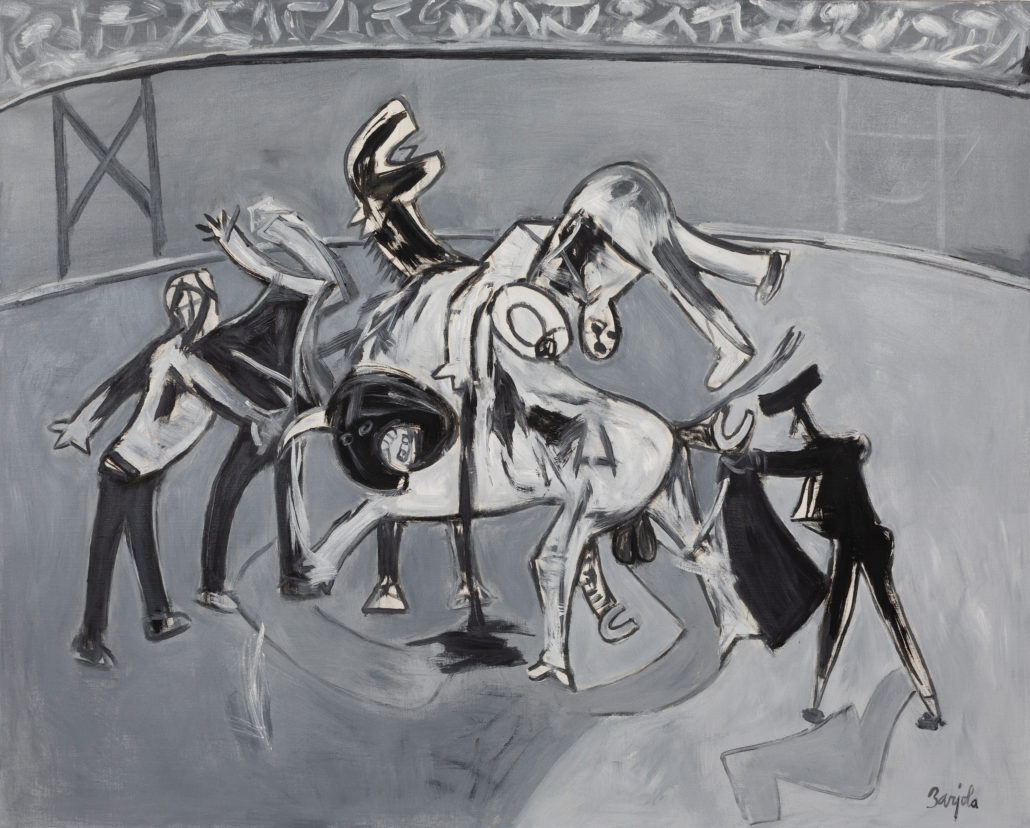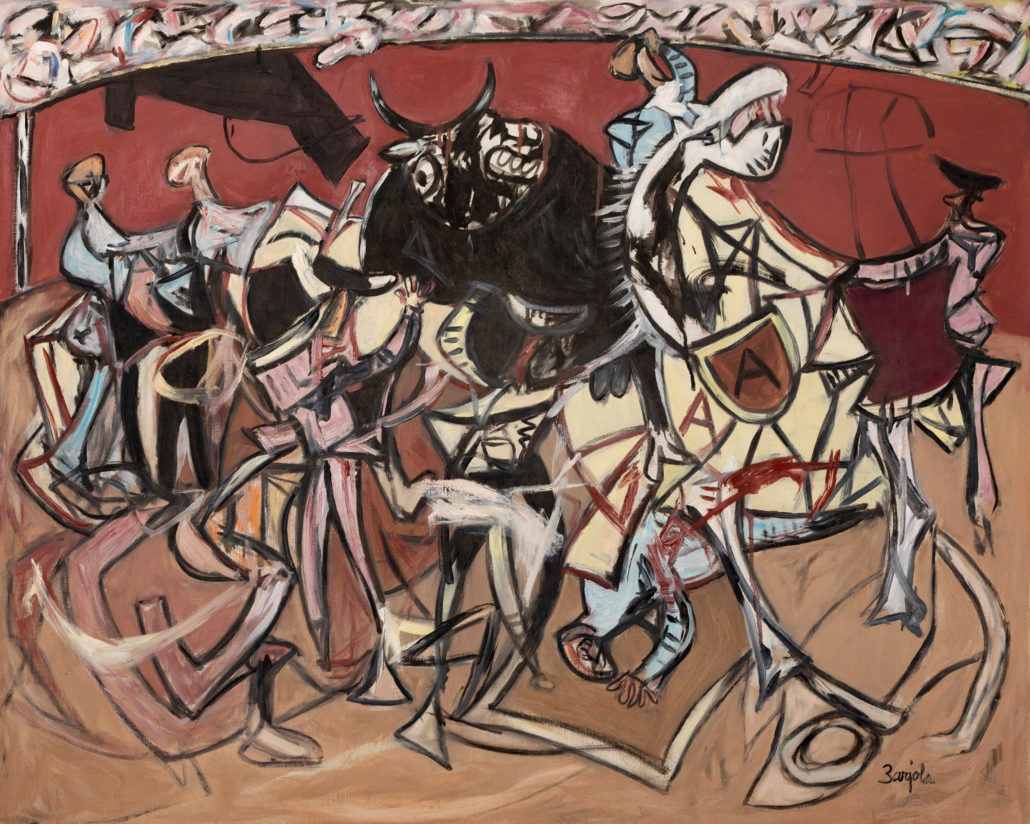Juan Barjola: art and bullfighting.
Regardless of current considerations, The themes related to bullfighting have been projected in the plastic arts over several centuries, evidencing the deep roots that bullfighting poetry has exercised in the imaginary of countless renowned artists who did not hesitate to immortalize through their brushes, his particular conception of the bullfighting world. In this sense, Goya’s drawings and engravings mark a turning point in this type of representation dominated until then, due to its playful and friendly character. Later, the impressionist painters found in the bullfighting universe the perfect setting in which to transform color into light and crowds into spots and brushstrokes, where the square became a metaphor for the battle between life and death that it faces. the animal. Within the avant-garde period, we cannot fail to mention Pablo Picasso who, of all the bullfighting painters, was probably the most emblematic. Among the multiple themes that the artist explored throughout his life, his passion for bullfighting acquires a special significance that he reflected through multiple artistic practices.
The fascination that bullfighting aroused on a visual and aesthetic level has been synonymous with success within the international art market , where painters such as Sorolla, Zuloaga, Regoyos, Dalí or Botero have conquered the world of collecting. Without going any further, contemporary artists such as Miquel Barceló have reached their record price with works such as “Multero”, whose auction rose to 3 and a half million dollars. Other An outstanding case is undoubtedly that of Juan Barjola, who after achieving his best results thanks to unmistakable bullfighting such as those that we will tender in Setdart soon, has managed to stabilize and consolidate its value.
Recognized as one of the great figures of Spanish Expressionism, Barjola cultivated this style from a very personal perspective that has its roots in the most dramatic vein of the national pictorial tradition. The deep imprint of Goya and Picasso shines through in the artist’s pictorial universe, who especially through his bullfighting gave us a groundbreaking, stark and dramatic vision of human existence, palpable in the pair of canvases that we presented on June 17 .
The tragic sense that runs through all his work and that reaches its maximum and most vivid expression in bullfighting, is intimately linked to the harsh events that occurred after the Civil War which, without a doubt, sharpened the critical and committed character of the painter. After the fierce brushstrokes, violent contrasts and decomposed figures that populate his paintings, Barjola shows us a pictorial universe that moves away from beauty and idealization to enter the less pleasant facets of humanity.
In this aspect, His bullfighting inevitably makes us think of those made by Francisco Goya . Regardless of the wide temporal space that separates them, both applied to the bullfighting imaginary an intensity and heartbreaking energy in which the dramatic sense and monstrosity prevail over art and beauty. As the experts point out, Barjola looks at Goya’s strokes to give life to his stark portrait of an iconography of blood and sand where human force and animal force confront each other. This tragic confrontation shines through in compositions of great dynamism, expressiveness and even violence in which Barjola, as the Aragonese master did in his series of engravings, dispenses with any anecdotal element that physically and emotionally distance us from the work. The square, barely suggested by a fragment of the barrier, and the variegated lines that make up a crowd devoid of individual features, reinforce the dramatic character that both gave to light and emptiness.
Equal to Inescapable is the Picassian imprint that appears in Barjola’s plastic language. In fact, on several occasions his bullfighting passion has been equated with that of the Malaga maestro, whose expressive echoes find a close connection in its most sordid and human aspect. The analogous aspects between the two appear especially latent in the tense and suffocating atmosphere that it shares with works such as Guernica. Its figures, with angular contours and deformed faces, recall that now iconic image of the dying horse that is dying in Picasso’s work and that is assumed by Barjola, as the loudest expression of pain and violence. Fleeing from the triumphal representations, Barjola chooses the fiercest moment in the bullfighting ritual, where the horse dragged towards certain death takes on the role of innocent victim.
Consolidated as one of the great painters of modernity in Spain, the success and prestige that Barjola achieved is reflected in statements as significant as the one that Francisco Umbral dedicated to him when he defined him as “a Goya sublimated by Picasso”.




